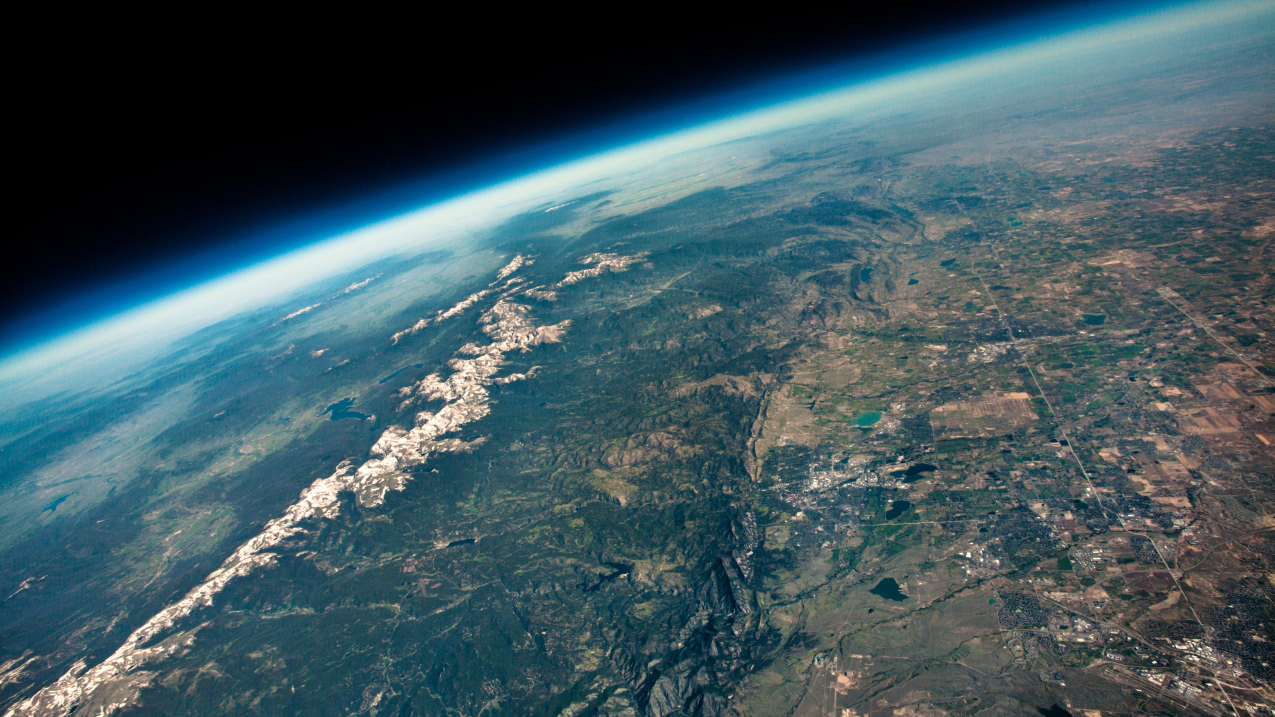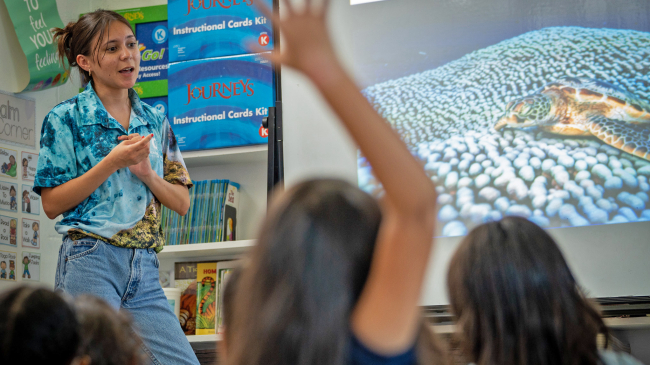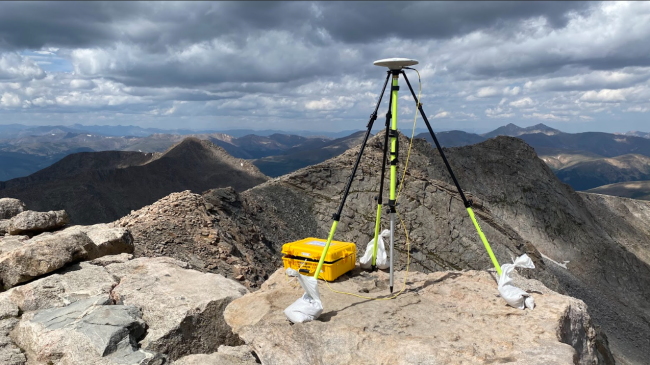The Montreal Protocol was adopted 35 years ago and remains a landmark environmental agreement, saving millions of people from cancer and contributing significantly to the protection of Earth’s climate system. Formally known as the “Montreal Protocol on Substances That Deplete the Ozone Layer,” this important U.N. treaty offsite link bans the release of harmful ozone-depleting chemicals such as chlorofluorocarbons, or CFCs.
Here are four facts about ozone, and the treaty that protects the ozone layer.

The view from an ozone balloon floating 100,000 feet above the Colorado Front Range. NOAA scientists based in Boulder, Colorado launch weekly balloons from sites all around the globe to monitor stratospheric ozone concentrations. Floating to over twice the altitude of commercial airliners, the curvature of Earth and inky black of space are clearly visible. (Image credit: Patrick Cullis, Cooperative Institute for Research in Environmental Sciences)
1. The Montreal Protocol was written to address ozone depletion caused by industrial chemicals.
In the 1970s, scientists (including several experts from NOAA) discovered that an important function of the stratosphere performed by ozone was impaired by persistent, industrial chemicals known as chlorofluorocarbons (CFCs). These chemicals led to the destruction of ozone molecules and depleted the layer that protects all life on Earth. One key concern was the large “hole” which was opening in the ozone layer each year over Antarctica.
Stratospheric ozone, which is found about 7-25 miles above the Earth, protects life on the Earth’s surface from the harmful effects of ultraviolet radiation, including skin cancer and weakened immune systems in humans. It also enables healthy ecosystems and productive agriculture.
Atmospheric scientists identified the actions that humans were taking to cause the stratospheric ozone depletion. Chlorine and bromine, released by the breakdown of CFCs, were particularly problematic. The 1987 Montreal Protocol phased out production and use of these and other substances that deplete ozone. These bans have had a significant, positive impact on the ozone layer.
2. The loss of stratospheric ozone changed weather in more than half the planet.
In addition to allowing more ultraviolet radiation to penetrate to the surface, the ozone hole forming over Antarctica each year created many wide-ranging climate impacts on the Southern Hemisphere. By the 1980s, scientists noted that jet streams were changing. As a result Australia got drier, and the rain increased in parts of Uruguay, Brazil, Paraguay and Argentina.
The changing wind patterns that caused these effects paused around the year 2000, approximately when the Montreal Protocol began to take effect. In 2020, researchers from NOAA’s Chemical Sciences Laboratory documented that declining atmospheric concentrations of ozone-depleting chemicals were responsible.
3. The Montreal Protocol is the only U.N. treaty ratified by every country on Earth.
One hundred and ninety-seven U.N. member states adopted the Montreal Protocol, making it the only U.N. treaty ratified by every country on the planet. President Ronald Reagan, when signing the document, called it a “model of cooperation” and pledged that the U.S. would give the “highest priority to analyzing and assessing the latest research findings.”
Numerous amendments over the years since it was first written have helped to incorporate new research findings on ozone. Those amendments have also helped to address new challenges that have arisen.
CFCs deplete the ozone layer, but scientists have also learned that they are also potent greenhouse gases, which lead to warming of the Earth’s surface climate. Controlling CFCs helped to reduce greenhouse gas emissions around the world — an important action toward reversing the trend of climate change.
A new problem emerged, however, when some of the ozone-saving substitutions made for the CFCs were found to be problematic in other ways. Hydrofluorocarbons (HFCs) cause considerably less damage to the ozone layer compared to CFCs because they lack chlorine and bromine, but are powerful greenhouse gases. In October 2016, the Kigali Amendment was adopted to phase down future global production and consumption of HFCs, marking the first time the Montreal Protocol adopted regulations solely for the protection of climate. Its global implementation should prevent as much as half a degree Celsius of warming by the end of the century.
4. Future innovations may need to be monitored for their impact on ozone.
In coming years, the Montreal Protocol may need to address several new atmospheric challenges.
NOAA’s Office of Atmospheric Research found that space traffic, which is projected to increase in the future, could boost emissions of soot directly into the stratosphere, which could deplete the ozone layer in some seasons.
"We need to learn more about the potential impact of hydrocarbon-burning engines on the stratosphere and on the climate at the surface of the Earth,” said Christopher Maloney, a research scientist from the Cooperative Institute for Research in Environmental Sciences working in NOAA’s Chemical Sciences Laboratory. “With further research, we should be able to better understand the relative impacts of different rocket types on climate and ozone."
At the same time, a team of international experts has noted that several space-borne satellites providing ozone-related atmospheric measurements are due to be retired within a few years. Without replacements of these instruments, it could be difficult to monitor and explain changes in the stratospheric ozone layer in the future.
NOAA’s staff continues to work with scientists from around the world to monitor ozone depletion, and continues to participate in conferences regarding the terms and amendments of the Montreal Protocol. Approximately 230 scientists from 30 countries contributed to the tenth scientific assessment of the treaty. They concluded that the recovery of Earth’s protective ozone layer is on track and should recover to values similar to those before the appearance of the ozone hole. Recovery is predicted to take place by around 2066 over the Antarctic, by 2045 over the Arctic and by 2040 for the rest of the world.



